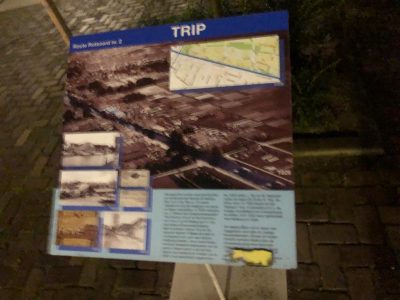The Trip
Due to the transport of raw materials and finished products, the Vaartse Rijn was ideal for the establishment of large and small industries in the 16th and 17th centuries. In 1820 Mr. L. Robert sold his shipbuilder's yard “De Verloren Zoon” and the house with “erve” on the slope to H. Trip, a German inland waterway skipper. With 6 ships, Trip and his partner traded Belgian lime and coal from Liège to various Dutch cities. Coincidentally, a thriving retail business also sprang up. Tras (base for cement) and tuff from the Eifel were also included in the range at that time.
after 1826, J. Trip and W. Klaassen continued the company under the name De Erven H. Trip. In 1830 there was a “lijnbaan” with 14 workers (at the current Vondellaan) to make ship rope. As early as 1842, trading bonds with Hamburg and Italy were established as well.
De Helling was filled with warehouses for lime and other building materials. Branches were set up inside and outside Utrecht (on the Groeneweg, production started with concrete sewerage houses). Built around 1960 […] modern storage space […].

